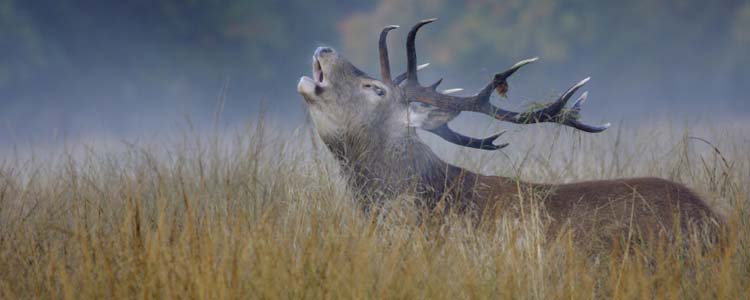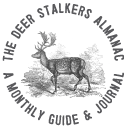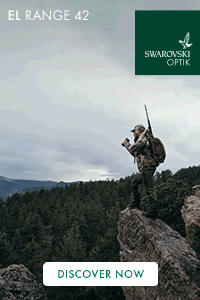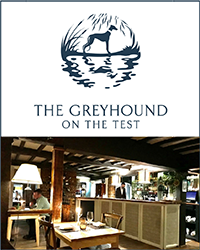With the eagerly anticipated Roe rut due to kick off at the end of the month, July represents one of the most exciting months in the deer stalkers calendar.

The Roe Rut: Why Late July Is the Pinnacle of Summer Deer Hunting
For UK deer stalkers, late July signals something special. As the Roe rut approaches, there's a brief but exciting window when everything changes in the woods. Usually, elusive Roebuck now fuelled with testosterone and eager to seize every mating opportunity, throw caution to the wind and for a couple of weeks, typically from around 20th July to 10th August, the tables tip slightly in the deer stalker's favour.
This isn’t just another day in the field. It’s one of the most exciting and rewarding periods in the stalking calendar.
The Roe Rut: What Makes It Different?
What sets the rut apart is interaction. Unlike the usual slow and careful stalking, at this time of year it is possible to actively call bucks from cover using a roe call like the Buttalo, which mimics the sound of a doe in season or a young kid.
Sometimes, the call acts like a magnet, other times… nothing. There are definite peaks and troughs, and weather plays a huge part with hot, humid days being best. Cold, wet, or windy weather usually kills the mood. But then there are days that just simply defy logic altogether.
That’s the appeal. It’s unpredictable, intense, and when it works, utterly unforgettable.
A Few Hard-Earned Tips
Over the years, I have learnt certain patterns. Here are some hard-earned takeaways, if you're heading out this July:
- Don’t jump the gun. In southern England, the action typically kicks off from around 24th July. Further north, especially in Scotland, it may not start until early August. Go too early and you risk educating the deer without gaining anything in return.
- Be properly concealed. Whether you’re on the ground or in a high seat, deer can come from any direction. Calling tends to make them cautious and alert so being seen, even for a moment, can put an end to things fast.
- Keep an eye on the weather. Rutting activity is closely tied to weather conditions. Aim for still, muggy days if you can.
- Ease into calling. Start with a single ‘peep’. If nothing happens, build gradually.
- Don’t just call at dawn and dusk. While those times are classic, during the rut, late morning and early evening can also be very productive.
- Practice the call. Learn how to use it before you’re in the field. It might result in a few raised eyebrows from your family, but getting the tone right can make all the difference.
- Know your ground. If you already have a good idea where bucks are lying up, you’re well ahead. During the rut, they won’t wander far and will usually come if they hear the right call.
- Be patient. Some bucks come charging in within seconds. Others might take much longer and may approach cautiously. Don’t give up too soon.
Shot Placement: Stay Ready
One challenge that catches people out is shot placement. A buck responding to a call will often come in head-on, in high vegetation, grass, or standing crop, giving you a narrow window and a smaller target area, during which only a neck shot may be possible. With small deer like Roe, this means that you have a smaller target area and margin for error, so make sure you’ve put in the practice beforehand. When that moment comes, things can happen quickly.
A Truly Wild Experience
Roe deer don’t live in parks or managed spaces; they are a truly wild, untamed species and that is part of the appeal. There’s no scripted outcome. It’s just you, the deer, and a few short weeks where anything can happen.
It’s no exaggeration to say that stalking Roebuck during the rut is one of the great highlights of UK deer hunting. Whether you're in the lowlands of England or the hills of Scotland, it’s a chance to witness behaviour that you’ll not see at any other time of year and maybe with a little skill and a smidgen of luck you’ll take home a truly memorable buck.
Shot something special?
You may be interested in taking the Trophy Evaluation Masterclass available through the Shooting & Hunting Academy which provides top tips and guidance on how to assess Roebuck and all six of the UK’s deer species: Trophy Evaluation Masterclass
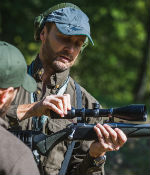 IN Season in England & Wales: Roebuck, Muntjac Buck & Muntjac Doe.
IN Season in England & Wales: Roebuck, Muntjac Buck & Muntjac Doe.
OFF Season in England & Wales: Roe Doe, Fallow Doe, Fallow Buck, Sika Hind, Sika Stag, Red Hind, Red Stag, CWD Buck & CWD Doe.
IN Season in Scotland: Roebuck, Fallow Buck, Red Stag, Sika Stag
OFF Season in Scotland: Roe Doe, Fallow Doe, Sika Hind, Red Hind.
(Peter Jones - Editor)




